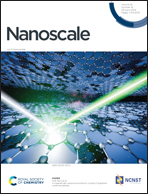Multi-stimuli-responsive polymer degradation by polyoxometalate photocatalysis and chloride ions†
Abstract
Photocatalytic polymer degradation based on harnessing the abundant light energy present in the environment is one of the promising approaches to address the issue of plastic waste. In this study, we developed a multi-stimuli-responsive photocatalytic polymer degradation system facilitated by the photocatalysis of a polyoxometalate [γ-PV2W10O40]5− in conjunction with chloride ions (Cl−) as harmless and abundant stimuli. The degradation of various polymers was significantly accelerated in the presence of Cl−, which was attributed to the oxidation of Cl− by the polyoxometalate photocatalysis into a highly reactive chlorine radical that can efficiently generate a carbon-centered radical for subsequent polymer degradation. Although organic and organometallic photocatalysts decomposed under the conditions for photocatalytic polymer degradation in the presence of Cl−, [γ-PV2W10O40]5− retained its structure even under these highly oxidative conditions.



 Please wait while we load your content...
Please wait while we load your content...